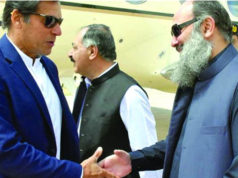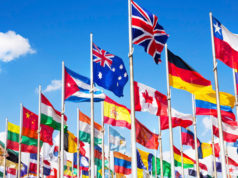Syed Amir Shah
The implementation of Single National Curriculum (SNC) from prep to grade 5 in Pakistan’s most populous province has created a stir and has divided the educational landscape of the country into seemingly two opposing camps. The arguments in favor of SNC are underpinned by the concept of social justice i.e. providing every child with the same educational experiences and learning opportunities, and the nation-building imperative of the postcolonial state that uses education as means of forging a national identity. Critics, on other hand, have raised important questions regarding the transmission of ideological content through the textbooks. The two most salient critiques of SNC revolve around the issues of the textbook portrayal of gender norms and relations, and second, the increased emphasis on religious content in subjects other than Islamiat. This article aims to add to the critical voices and to diversify the critique by bringing in regional perspective and global influences that shape our national education policy-scape.
To begin with, the curriculum is, first and foremost, a political project. It sets the parameters of what future citizens of the country ought to know in order to function as a member of society. It also defines what is legitimate knowledge and draws boundaries in order to exclude other kinds of knowledge and understanding. It involves important political decisions about who controls the production and regulation of knowledge in society. Through the acts of remembrance and forgetting past events and personalities, the curriculum is also intimately associated with the production of individual and collective identities. Our notions of who is a citizen, what are its rights and duties, and how its relationship with the state and society ought to be conducted and realized, are all influenced and defined by the state-sanctioned curriculum in a myriad of ways. Thus, seeing curriculum merely as an educational instrument not only limits our understanding of it but also excludes the possibility of analyzing it from various political and sociological perspectives.
Read Also: Higher Education Reforms in Balochistan
It is also important to note that our current understanding of curriculum, which has characterized most of our debates around SNC over social media, is also very restrictive and excludes most of the activities taking place inside our educational institutions. The curriculum is misleadingly associated with something that is embodied in textbooks. This is only fractionally true. Curriculum refers to all those activities and experiences, deliberately designed or otherwise, that students are exposed to in their educational settings. It includes not only the textbooks but also the issue of how textbook content is delivered to the students, either in a top-down manner where students assume the role of the passive listener or through more participatory methods that place students at the center of the learning experience. The curriculum is not restricted to classrooms either but includes all aspects of schooling including textbooks, pedagogy, school organization and management, decision-making processes at various levels, sports, and other co-curricular activities. Thus ‘curriculum’ in the single national curriculum is used in a very narrow and restrictive sense. In fact, it can better be understood as a policy that sets and defines minimum academic standards for students’ performances in exams. This ‘outcome-based approach to education will be discussed later in the article.
In the broader scheme of things, there have been two major changes in the nation’s educational policy and practice during the last two decades. The first major change is due to large-scale neoliberal reforms in the country which led to a highly unregulated and uncontrolled education ‘market’. It further facilitated varied actors to get involved in the education sector at every level – from the provision of education to the processes of policymaking and implementation. Furthermore, the ideology of the knowledge economy led to the unprecedented increase in the number of public and private higher education institutions (HIEs) in the urban centers of the country. With an increased number of graduates and the economy unable to provide jobs as a result of the government’s hands-off policy, there is growing frustration and disillusionment in the youth against the state.
The second important change is what is referred to as ‘securitization of education in the country. Various factors contributed to this new phenomenon. First, in the aftermath of 9/11, Pakistan’s education sector came under international scrutiny, particularly its religious schools for its alleged role in the propagation of religious extremism. Second, there were increased deadly attacks on schools and universities across the country, resulting in the loss of precious lives. Finally, and most importantly, the decentralization of political power under the eighteenth constitutional amendment did not go well with the state’s security apparatus and there have been many efforts to reverse the amendment to form a more centralized system of governance that is more conducive to the exercise of power by the powerful military of the country. As a result of securitization, educational institutions were not only supposed to be protected from the terrorist attacks, but it gave a whole new purpose to education as means of combating terrorism and extremism in society, and the idea was materialized in institutions like National Counter Terrorism Authority (NACTA).
It was in this context of youth disillusionment due to neoliberal reforms and the army’s anxiety with power devolution that the idea of a unified education system got conceived and became part of IK populist agenda. The idea propagated during the PTI election campaign was simple or rather simplistic – the problems lie in the stratified education system which creates losers and winners, thus, the solution is to replace the existing system with a uniform system of schooling. The imaginary had a lot of appeal to the urban educated youth of the country. It is to note that the original idea was not that of a single national curriculum, but that of a single education system, but what came out, as a result, is a reenactment of the 2006 curriculum, with certain inclusions and omissions, and celebrated as a major victory of the government.
Beyond the populism of the current hybrid dispensation, anyone remotely aware of Pakistan’s education system knows that putting a single schooling system in the country is neither desirable nor possible due to the scale of the problems associated with it. Pakistan has the highest number of out-of-school children. Simply bringing these kids back to school requires the construction of thousands of new schools and the recruitment of teachers, for which government has neither capacity nor resources. The stratified schooling system, which the PTI government intended to replace, serves the interests of various governmental and social elites. For example, in my home province of Balochistan, the different kinds of schools and colleges run under the ministry of defense perform various functions. Some of them function to segregate civilian children from that of federal government employees and military families; some are functionally associated with the provision of ‘manpower’ to the military, and the rest of them are purely commercial entities. Analyzing varieties of public, private, and religious schools require separate space and cannot be done here.
School financing is another big challenge. Pakistan, along with Nigeria, has the lowest Tax-to-GDP ratio in the world. Without enhancing the state’s capacity to deliver quality education by increasing and diversifying its sources of revenue and reforming the tax system, there cannot be any meaningful reform of the education system. Another major issue and a source of contention is the political role of education in national identity formation. It has remained a major source of conflict between federating units, ethnic,
cultural, and religious groups. The list of issues and problems with our education system is very long, not to mention its role in the production of social inequalities on grounds of the region, language, class, gender, religion, etc. – the area that should have been a prime focus of our incumbent government, but not surprisingly, completely ignored by the single national curriculum.
Coming back to SNC, there is a great deal of difference between policy discourse and actual practices regarding the aims and objectives of the new curriculum. The discourse around the SNC is underpinned by social justice imperative that seeks to provide each child with the same learning opportunities and educational experiences. It also aims to promote social cohesion by imparting common norms, values, and beliefs. Both are worthy objectives, but how these objectives are to be achieved tells a very different story.
First, the policy takes the existing template of nation-building as a ‘homogenization’ project of the state, which is inherently hostile to the existence and acknowledgment of diversity in society. The nation-building process remains hostage to ‘national identity rather than the border and inclusive concept of citizenship as foundation of social cohesion. There has been plenty of research work done on how national identity, based on religion, is materialized in textbooks and the ways in which it marginalizes people of other faiths, ethnic and sectarian groups, and discriminates against women. Here, I must acknowledge the work of the late Rubina Saigol for her valuable insights and to honor her memory.
Second, the SNC is against the constitution of the country and also undermines the functioning of federal democracy. Pakistan is facing three major structural issues i.e. the tendency of the federal government to monopolize political and economic control; the majoritarian democracy which puts one ethnic group in a dominating position; and the overarching control of the state institutions by a powerful army. If Pakistan is to achieve any degree of cohesion and integration, it is through establishing the supremacy of the constitution and the social justice program which seeks to empower all social groups in the country. It is highly unlikely that any state will achieve social cohesion through textbook messages only without actually dismantling the discriminatory social and political structures. In fact, the single national curriculum will further antagonize and alienate women, religious and ethnic minorities in the country through its inherent features of cultural repression and undermining the constitution and federal democracy.
Finally, the SNC is also informed and shaped by global influences, which warrants few words. Technically, the SNC is rooted in the global education policy and reform agenda, pushed forward by influential international organizations like OECD and World Bank, which emphasizes the measurement of students’ outcomes as an indicator of education quality. As states are increasingly absolving themselves from the provision of education as their basic responsibility, they are also facilitating the marketization of education and encouraging different private and non-state actors in this process. The result of this reconfiguration of states has been the shift of focus from the ‘input’ (provision of education) to the ‘output’ (measurement) of the system. Prof. S.J. Ball calls it a shift from government to governance in education and calls the outcome-based approach a new form of governmentality where students’ performances on standardized tests are used as accountability and governance mechanisms. There is a separate field in educational research that studies how global policy prescriptions travel across the globe and shape local and national education systems in a highly decontextualized manner.
The rootedness of SNC in an outcome-based approach carries the seeds of neoliberal governmentality, which is aptly critiqued for its insensitivity to the issues of equity in the provision and distribution of educational resources and merely focusing on students’ outcome on tests as an accountability mechanism. This can be a dangerous proposition for Pakistan, where the schooling system is already highly stratified. The SNC enables the government to assume the role of a ‘monitor’ or a ‘supervisor’ of the education system without actually concerning itself with its constitutional obligation of providing citizens with a free universal primary and secondary education as their right.
To conclude, the single national curriculum is a distraction at best. As a discourse, it has eliminated the possibilities to talk about any meaningful educational reform. The entire debate is happening within a narrow framework, what Prof. Robertson called ‘methodological education”. We hardly find voices and critiques that situate education in the larger social formation and analyze schooling in relation to social, political, cultural, and economic dimensions of society. Beyond its policy rhetoric, it does not address any of the real challenges facing Pakistan’s education system. The curriculum remains embedded in the state’s hegemonic agenda of cultural homogenization, Islamization, and repression of women and minorities, while at the same time, completely oblivious to the economic inequalities and social reproduction role of education in society.
The writer teaches Political Science at the University of Balochistan and can be reached at [email protected].
Disclaimer: Views expressed in this article are those of the author and Balochistan Voices not necessarily agree with them.
Share your comments!








